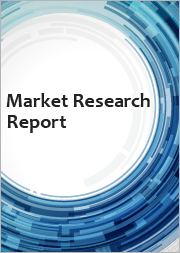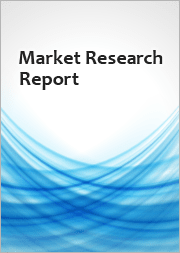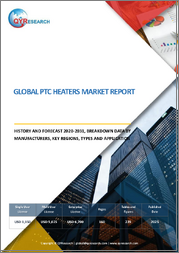
|
시장보고서
상품코드
1686254
자동차용 HVAC : 시장 점유율 분석, 산업 동향, 통계, 성장 예측(2025-2030년)Automotive HVAC - Market Share Analysis, Industry Trends & Statistics, Growth Forecasts (2025 - 2030) |
||||||
자동차용 HVAC 시장 규모는 2025년에 691억 5,000만 달러, 2030년에는 945억 6,000만 달러에 달할 것으로 예측되며, 예측기간(2025-2030년)의 CAGR은 6.46%를 나타낼 것으로 예상됩니다.

자동차 용품과 공급망 시장은 COVID-19에 의해 큰 영향을 받았습니다. 자동차용 HVAC 시스템 시장은 유행의 발생에 영향을 받았습니다. 2020년 승용차 및 상용차 판매 대수 감소, 차량 및 부품 생산 시설의 일시적인 운전 정지는 주로 지역 정부가 실시한 엄격한 봉쇄 조치에 기인합니다.
지역 시장은 같은 시기에 폐쇄된 공급망과 원료 공급원의 측면에서 여러 과제에 노출되었습니다. 2021년에는 자동차 부문이 생산 부문을 쇄신하는 전환의 해로 주목받았지만 사례가 감소함에 따라 생산 시설은 운영을 재개하고 자동차 판매는 주요 지역 전체에서 증가하고 HVAC 부품의 제조 및 판매에 밝은 전망을 가져왔습니다.
장기적으로는 HVAC 시스템의 채용으로 인한 열적 쾌적성에 대한 수요 증가와 안전성의 향상이 자동차용 HVAC 시장 성장을 가속할 것으로 예상됩니다. 시스템의 소형화와 경량화는 향후 수년간 시장 성장을 지원할 수 있습니다. 전자, 센서, 자동 기후 제어 기능을 보다 저렴한 비용으로 통합함으로써 승용차에 HVAC 유닛의 채용이 확대되고 있습니다. 자동차의 전동화가 진행됨으로써, 선진적인 쾌적성과 안전성의 통합이 진행될 것으로 보입니다.
기술 혁신과 R&D 이니셔티브에 대한 많은 투자는 기업의 제품과 기술력을 강화하는 태세를 갖추었습니다. 또한, 환경 친화적인 냉매 채택과 저렴한 HVAC 시스템의 생산은 자동차 HVAC 시장에서 사업을 전개하는 기업에게 유리한 성장 기회를 제공합니다. 주요 기업은 자동차 실내의 미립자 대책에 도움이 되는 첨단 HVAC 시스템을 자동차에 도입하고 있습니다.
아시아태평양은 중국, 인도, 일본 등의 국가에서 자동차 생산량이 많아 자동차용 HVAC 시장에서 가장 큰 부문이 될 것으로 예상됩니다. 북미는 향후 수년간 제조업체에게 새로운 성장 전망을 창출할 것으로 예측되고 있습니다. 유럽 시장은 완만하지만 꾸준한 성장을 보이고 있으며 향후 5년간 멜트다운 전 수준에 도달할 것으로 예상됩니다.
자동차용 HVAC 시장 동향
승용차가 장기적인 원동력으로
승용차 판매는 모든 차종에서 HVAC 시장을 깊이 견인해 왔습니다. 2021년 세계 자동차 판매 대수는 약 6,670만대, 2020년은 약 6,380만대였습니다. 전 세계 팬데믹은 세계 자동차 판매를 포함한 세계 경제 활동에 영향을 미치고 바이러스의 확산을 억제하기 위해 여러 국가에서 엄격한 봉쇄가 실시되었습니다. 이 때문에 2020년 자동차 판매량은 2019년에 비해 14.8% 감소했습니다. 그러나 삶이 정상으로 돌아 가면서 자동차 판매량이 세계적으로 증가하고 예측 기간 동안 자동차 스티어링 센서 시장의 성장을 뒷받침하게 됩니다. 이러한 자동차 판매를 위해 OEM이 현재 제공하는 제품은 고급 HVAC 및 기후 제어 시스템을 제공 모델에 통합하고 있습니다. 예:
- 2022년 10월, Polestar는 3개의 전동 SUV 모델을 세계 시장에 투입했습니다. 이 SUV는 장시간 이동에도 승객에게 편안함을 제공하는 첨단 공조 제어 시스템을 갖추고 있습니다.
세계 자동차 부문에서 R & D의 활성화는 시장 기업의 기술력을 높일 것입니다. 이러한 시장 기업들은 시장에 경쟁력을 부여하는 신제품을 개발하기 위해 자동차 HVAC에 첨단 기술을 도입하고 있습니다. 시장 경쟁사는 배기 가스에 대한 정부의 엄격한 규제에 대응하기 위해 친환경 제품을 개발하고 있습니다. 에너지 효율은 HVAC 시스템의 성장을 가속하는 또 다른 매개 변수입니다. 개발 업체는 환경 친화적이고 에너지 효율적인 자동차 HVAC 시스템을 개발하기 위해 그린 테크놀러지를 점점 더 많이 사용하고 있습니다. 예를 들면
- 2021년 11월, 마렐리 코퍼레이션은 자동차 및 실내 환경의 박테리아와 바이러스를 사멸시키는 실내 공기 품질(IAQ) 정화 시스템을 개발했습니다. 이 시스템은 UV-A 및 UV-C 빛과 이산화티타늄(TiO2) 필터를 조합하여 이용하여 15분 이내에 99% 이상의 효과로 COVID-19를 포함한 공기 중의 박테리아나 바이러스를 파괴합니다.
시장 기업은 시장에서의 존재를 확대하기 위해 M&A를 실시했습니다. 예를 들어 덴소는 도요타와 공동으로 자동차 안전, 연비 효율, 그린 테크놀러지을 촉진하는 하이브리드 기술, 프리우스를 개발했습니다. 또한, 지구 온난화에 대한 우려 증가는 자동차 HVAC 시장에 약간의 영향을 미칩니다. 그 결과 세계 여러 나라들이 이산화탄소 배출을 줄이기 위한 조치를 취하기 시작했으며, 이 부문의 HVAC 수요가 감소할 수 있습니다.
아시아태평양에서 고성장 전망
아시아태평양 시장은 주요 자동차 제조업체가 가까이에 있으며 대규모 자동차가 생산되고 인도, 한국, 중국과 같은 생산국의 자동차 수요가 급증하고 있기 때문에 아마도 큰 발전을 이룰 것으로 보입니다. 자동차 사업을 회복시키기 위한 정부의 활동이 내년 시장을 견인할 것으로 예상됩니다. 예를 들어 인도 정부는 새로운 혁신을 시장에 투입하기 위해 자동차 분야의 프로그램 과정을 통해 외국 투자를 장려하고 있습니다.
2022년 4월 중국의 승용차 생산 대수는 99만 6,000대에 이르고, 판매 대수는 96만 5,000대를 기록했습니다. 이는 전년 대비 생산이 41.9%, 판매가 43.4% 감소한 것을 의미합니다. 2022년 1-4월의 승용차 생산 대수도 전년 동기 대비 2.6% 감소한 64억 9,400만대가 되었습니다.
중국은 최대 시장 중 하나이며 이러한 자동차용 HVAC 시스템 수요에 크게 기여하고 있습니다. 인도, 중국 및 기타 아시아태평양의 승용차 수요 증가는 편안함과 안전성에 대한 사람들의 선호도 증가로 인한 것입니다. 이러한 요인은 이 지역 시장 성장에 기여할 것으로 예상됩니다. 소비자는 퍼 컴포트 기능을 제공하는 하이 스펙 자동차를 지향합니다. 게다가 태국과 말레이시아를 포함한 국가에서는 외국계 기업에 의한 자동차 생산이 급증하고 있습니다.
중국 자동차 딜러 협회(CADA)에 따르면 2021년 8월 중국 국내 고급차 딜러의 판매 대수는 27만 8,000대로 전년 동월 대비 9.4% 감소했습니다. 2021년 BMW는 81만 5,691대를 등록해 중국의 프리미엄 부문 자동차 판매를 백업했습니다. 이로 인해 BMW는 중국에서 가장 판매량이 많은 고급 자동차 제조업체가 되었습니다. 메르세데스 벤츠와 아우디는 프리미엄 부문 자동차 판매량이 감소했습니다.
이러한 요인과 지속적인 수요를 고려하면 시장은 예측 기간 동안 높은 성장률로 성장할 것으로 예상됩니다.
자동차용 HVAC 산업 개요
자동차용 HVAC 시장은 통합되어 세계 주요 기업이 시장 점유율의 대부분을 차지하고 있습니다. 공조 시장의 주요 기업으로는 말레 GmbH, 주식회사 덴소, 미쓰비시 중공업 주식회사, 하논 시스템즈 등이 있습니다. M&A, 지역 공조기기 제조업체와의 제휴, 자동차 제조업체와의 제휴 확립과 확보는 시장 경쟁 구도를 형성하는 역학의 일부입니다. 예를 들면
- 2021년 11월 하논 시스템은 헝가리에서 두 개의 새로운 시설(페치의 새로운 공장과 레차그 확장 건물)을 완성했습니다. 이 시설에는 22,464 평방미터의 제조 공간이 있으며, 자동차용 에어컨(A/C) 라인의 성형, 브레이징, 용접, 굽힘, 조립 라인, 테스트 등의 설비가 설치되어 있습니다.
- 발레오는 2021년 8월, 에너지 수요의 3분의 2를 외기로부터 조달함으로써, 차재 배터리로부터 에너지를 꺼낼 필요성을 억제해, 자연 냉매를 사용하는 신형 발레오 히트 펌프를 발표했습니다. 이 히트 펌프를 탑재한 EV는 기존의 난방 시스템을 탑재한 EV에 비해 -15℃의 환경 하에서도 최대 30%의 주행이 가능합니다.
- 2021년 2월, Highly International(Hong Kong) Limited와 Marelli Corporation KK의 합작회사인 Highly Marelli Holdings가 설립되었습니다. Highly Marelli는 컴프레서의 전동화, 히트펌프 시스템, 난방, 환기, 에어컨("HVAC") 및 전동 컴프레서("EDC") 시스템 분야에서 고객과 공급업체에게 세계적인 솔루션을 제공하는 데 집중합니다.
기타 혜택 :
- 엑셀 형식 시장 예측(ME) 시트
- 3개월간의 애널리스트 서포트
목차
제1장 서론
- 조사의 전제조건
- 조사 범위
제2장 조사 방법
제3장 주요 요약
제4장 시장 역학
- 시장 성장 촉진요인
- 시장 성장 억제요인
- 업계의 매력도 - Porter's Five Forces 분석
- 공급기업의 협상력
- 소비자의 협상력
- 신규 참가업체의 위협
- 대체품의 위협
- 경쟁 기업간 경쟁 관계
제5장 시장 세분화
- 기술 유형별
- 수동, 반자동 HVAC
- 자동 HVAC
- 차량 유형별
- 승용차
- 상용차
- 지역별
- 북미
- 미국
- 캐나다
- 기타 북미
- 유럽
- 독일
- 영국
- 프랑스
- 기타 유럽
- 아시아태평양
- 중국
- 인도
- 일본
- 한국
- 기타 아시아태평양
- 남미
- 브라질
- 아르헨티나
- 기타 남미
- 중동 및 아프리카
- 아랍에미리트(UAE)
- 남아프리카
- 사우디아라비아
- 기타 중동 및 아프리카
- 북미
제6장 경쟁 구도
- 벤더의 시장 점유율
- 기업 프로파일
- Valeo Group
- Denso Corporation
- Mahle GmbH
- Marelli Corporation
- Sanden Corporation
- Keihin Corporation
- Japan Climate Systems Corporation
- Mitsubishi Heavy Industries Ltd
- Hanon Systems Corp.
- Samvardhana Motherson Group
- Hella GmbH & KGaA
제7장 시장 기회와 앞으로의 동향
SHW 25.04.01The Automotive HVAC Market size is estimated at USD 69.15 billion in 2025, and is expected to reach USD 94.56 billion by 2030, at a CAGR of 6.46% during the forecast period (2025-2030).

The automotive goods and supply chain market were drastically impacted by COVID-19. The automotive HVAC system market was affected due to the outbreak of the pandemic. The decline in passenger car and commercial vehicle sales in 2020 and the temporary shutdown of vehicle and component production facilities were primarily attributed to the stringent lockdown measures prevailed by regional governments.
The regional markets were exposed to several challenges in terms of supply chain and raw material sources which got highlighted during the same period. Although 2021 has marked itself as the year of transition where the auto sector revamped its production units, and with the decline in the cases, production facilities are back in operation, and vehicle sales have increased across major geographies creating a positive outlook for the HVAC component manufacturing and sales.
Over the long term, a rise in demand for thermal comfort and an increase in safety due to the adoption of HVAC systems are expected to boost the growth of the automotive HVAC market. A reduction in system size and weight of the system may support the growth of the market over the coming years. The integration of electronics, sensors, and automated climate control features at a lesser cost is translating into greater adoption of HVAC units in passenger vehicles. Rising vehicle electrification is likely to increase the integration of advanced comfort and safety features in vehicles.
Technological innovations and substantial investments in R&D initiatives are poised to enhance players' offerings and technological capabilities. Furthermore, the adoption of eco-friendly refrigerants and the production of cheaper HVAC systems provide lucrative growth opportunities for the players operating in the automotive HVAC market. Major players are introducing advanced HVAC system in vehicle which help to fight against fine particulates in vehicle cabin.
The Asia-Pacific region is expected to be the largest segment in the automotive HVAC market owing to the large vehicle production levels in countries such as China, India, and Japan. North America is forecasted to create new growth prospects for the manufacturers in the coming years. The European market is showing slow but steady growth and is expected to reach pre-meltdown levels over the period of the next five years.
Automotive HVAC Market Trends
Passenger Car to Provide Longer Term Momentum
Passenger car sales have deeply driven the market of HVAC across all car models. In 2021, global car sales were around 66.7 Million, which in 2020 were 63.8 Million. The global pandemic impacted economic activities all around the world including car sales across the globe, and strict lockdowns were enforced in several countries to contain the spread of the virus. Owing to this the number of cars sold in 2020 was 14.8% lower when compared to 2019. But with life returning to normalcy, the number of cars sold globally has increased which will aid the automotive steering sensor market growth in the forecast period. Owing to these vehicle sales, the present offering by OEM carries advanced HVAC and climate control systems integrated into their offered models. For instance:
- In October 2022, Polestar introduced its 3 electric SUV models in the global market. The SUV is equipped with an advanced climate control system to provide passenger comfort during long-duration journeys.
The augmenting research and developments in the automotive sector across the world are set to enhance the technological capabilities of the market players. These market players are introducing advanced technologies in automotive HVAC to develop new products that impart a competitive edge in the market. The competitors in the market are developing eco-friendly products to fall in line with the stringent government regulations regarding emissions. Energy efficacy is the other parameter driving growth in HVAC systems. Manufacturers are increasingly using green technologies to develop eco-friendly and energy-efficient automotive HVAC systems. For Instance,
- In November 2021, Marelli Corporation has developed an Indoor Air Quality (IAQ) Purification System, which kills bacteria and viruses in vehicles and indoor environments. The system utilizes UV-A and UV-C light combined with a titanium dioxide (TiO2) filter to destroy airborne bacteria and viruses, including COVID-19, with greater than 99% effectiveness within 15 minutes.
Market players are involved in mergers and acquisitions to expand their market presence. For instance, Denso collaborated with Toyota to develop Prius, a hybrid technology promoting safety, fuel efficiency, and green technology in vehicles. Furthermore, growing concerns about global warming have slightly impacted the automotive HVAC market. Consequently, many nations worldwide have started taking measures to reduce their carbon footprints which might reduce the HVAC deman in the segment.
High Growth Anticipated in the Asia-Pacific Region
The Asia-Pacific market is probably going to observe huge development attributable to the nearness of key automotive makers, vast scale generation of vehicles, and spiraling vehicle requests in the manufacturing countries, like India, South Korea, and China. Government activities to restore the automotive business are required to drive the market during the forthcoming year. For example, the Government of India is encouraging foreign investments through programmed courses in the automotive area to bring new innovations to market.
In April 2022, Chinese passenger car production reached 996,000 units with sales registering 965,000 units. This accounts the downfall of 41.9% and 43.4% respectively in production and sales compared to previous year. In 2022, January to April, passenger car production also decreased with 2.6% year-on-year registering 6,494 million units.
China is one of the largest markets and contributes significantly to the demand for these automotive HVAC systems. The increasing demand for passenger vehicles from India, China, and their other counterparts in the Asia-Pacific region is a result of the growing preferences of people for comfort and safety. These factors are expected to contribute to the market growth in the region. Consumers are aligning toward high-specification vehicles that offer par comfort features. In addition, there is an upsurge in vehicle production by foreign companies in countries, including Thailand and Malaysia.
According to the China Automobile Dealers Association (CADA), the luxury car dealers in the country sold 278,000 vehicles in August 2021, an 9.4% decrease year-on-year. In addition, llion units. In 2021, BMW backed up China's premium segment car sales registering 815, 691 units. This made BMW to become China's top selling luxury car maker. On similar lines Mercedes Benz and Audi witnessed decline in their premium car sales.
Considering these factors and ongoing demand, market is anticpated to witness high growth rate during the forecast period.
Automotive HVAC Industry Overview
The automotive HVAC market is consolidated, with the top global players accounting for most of the market share. The major companies in the air-conditioning market include MAHLE GmbH, DENSO Corporation, Mitsubishi Heavy Industries Ltd, and Hanon Systems. Mergers and acquisitions, partnerships with regional HVAC equipment manufacturers, and establishing and ensuring tie-ups with car manufacturers are some of the dynamics shaping the market's competitive landscape. For instance:
- In November 2021, Hanon System inaugurated its two new establishments in Hungary - a new greenfield production facility in Pecs and a building expansion in Retsag. The facility provides 22,464 square meters of manufacturing space and accommodates equipment including forming, brazing, welding and bending, assembly lines and testing for automotive air conditioning (A/C) lines.
- In August 2021, Valeo announced New Valeo heat pump that procures two-thirds of its energy demand from the ambient air, thereby limiting the need to draw energy from the onboard batteries, and uses a natural refrigerant. EVs equipped with the device can travel up to 30% further at -15°C than those fitted with more conventional heating systems.
- In February 2021, Highly Marelli Holdings Co., Ltd., a previously announced joint venture between Highly International (Hong Kong) Limited and Marelli Corporation K.K., has been formed. Highly Marelli will concentrate on providing world-class solutions for clients and suppliers in the areas of compressor electrification, heat pump systems, heating, ventilation, and air conditioning ("HVAC") and electric driven compressor ("EDC") systems.
Additional Benefits:
- The market estimate (ME) sheet in Excel format
- 3 months of analyst support
TABLE OF CONTENTS
1 INTRODUCTION
- 1.1 Study Assumptions
- 1.2 Scope of the Study
2 RESEARCH METHODOLOGY
3 EXECUTIVE SUMMARY
4 MARKET DYNAMICS
- 4.1 Market Drivers
- 4.2 Market Restraints
- 4.3 Industry Attractiveness - Porter's Five Forces Analysis
- 4.3.1 Bargaining Power of Suppliers
- 4.3.2 Bargaining Power of Consumers
- 4.3.3 Threat of New Entrants
- 4.3.4 Threat of Substitute Products
- 4.3.5 Intensity of Competitive Rivalry
5 MARKET SEGMENTATION (Market Size in Value USD Billion)
- 5.1 By Technology Type
- 5.1.1 Manual/Semi-automatic HVAC
- 5.1.2 Automatic HVAC
- 5.2 By Vehicle Type
- 5.2.1 Passenger Cars
- 5.2.2 Commercial Vehicles
- 5.3 By Geography
- 5.3.1 North America
- 5.3.1.1 United States
- 5.3.1.2 Canada
- 5.3.1.3 Rest of North America
- 5.3.2 Europe
- 5.3.2.1 Germany
- 5.3.2.2 United Kingdom
- 5.3.2.3 France
- 5.3.2.4 Rest of Europe
- 5.3.3 Asia-Pacific
- 5.3.3.1 China
- 5.3.3.2 India
- 5.3.3.3 Japan
- 5.3.3.4 South Korea
- 5.3.3.5 Rest of Asia-Pacific
- 5.3.4 South America
- 5.3.4.1 Brazil
- 5.3.4.2 Argentina
- 5.3.4.3 Rest of South America
- 5.3.5 Middle-East and Africa
- 5.3.5.1 United Arab Emirates
- 5.3.5.2 South Africa
- 5.3.5.3 Saudi Arabia
- 5.3.5.4 Rest of Middle-East and Africa
- 5.3.1 North America
6 COMPETITIVE LANDSCAPE
- 6.1 Vendor Market Share
- 6.2 Company Profiles
- 6.2.1 Valeo Group
- 6.2.2 Denso Corporation
- 6.2.3 Mahle GmbH
- 6.2.4 Marelli Corporation
- 6.2.5 Sanden Corporation
- 6.2.6 Keihin Corporation
- 6.2.7 Japan Climate Systems Corporation
- 6.2.8 Mitsubishi Heavy Industries Ltd
- 6.2.9 Hanon Systems Corp.
- 6.2.10 Samvardhana Motherson Group
- 6.2.11 Hella GmbH & KGaA



















